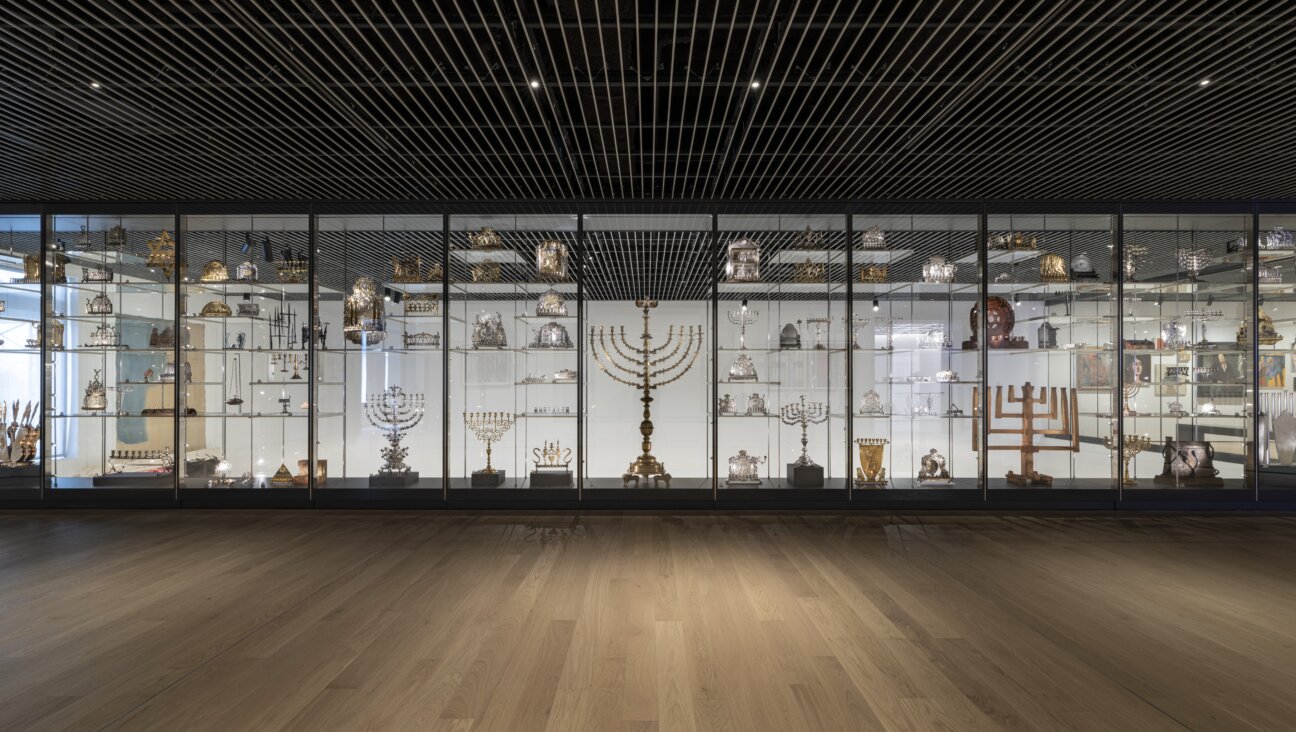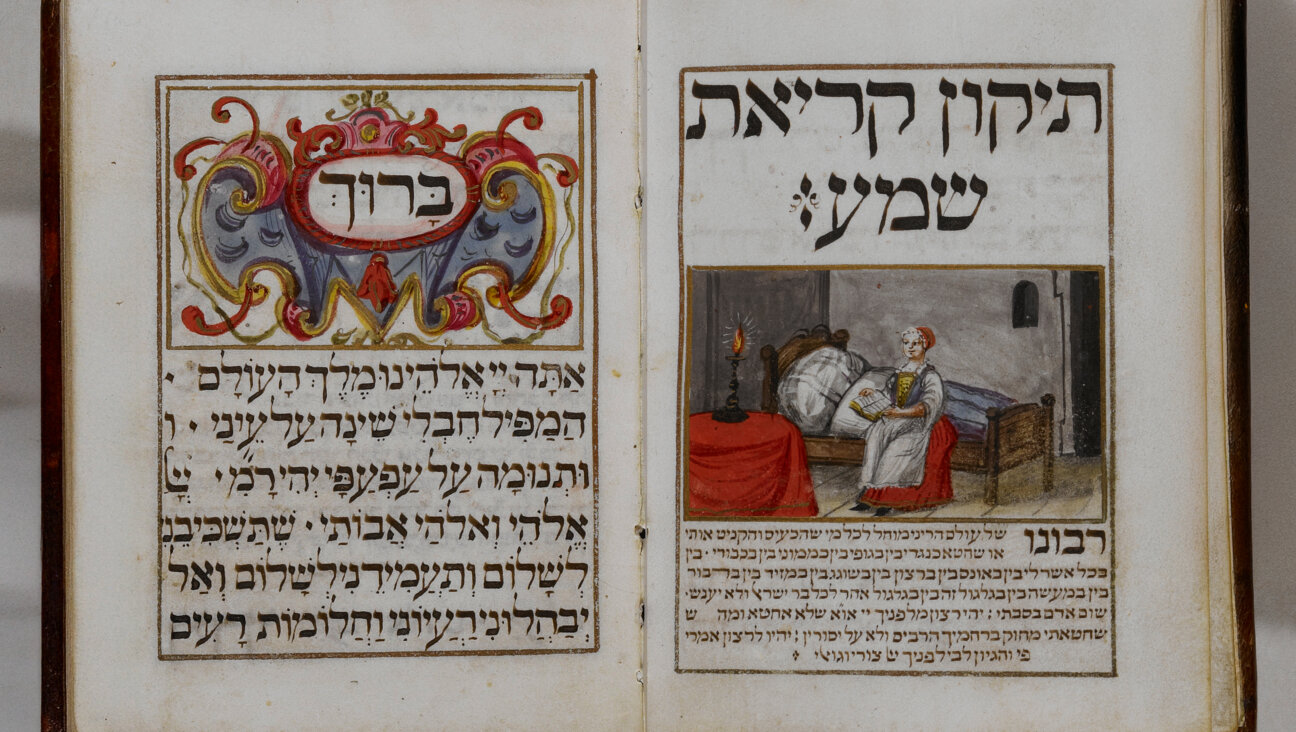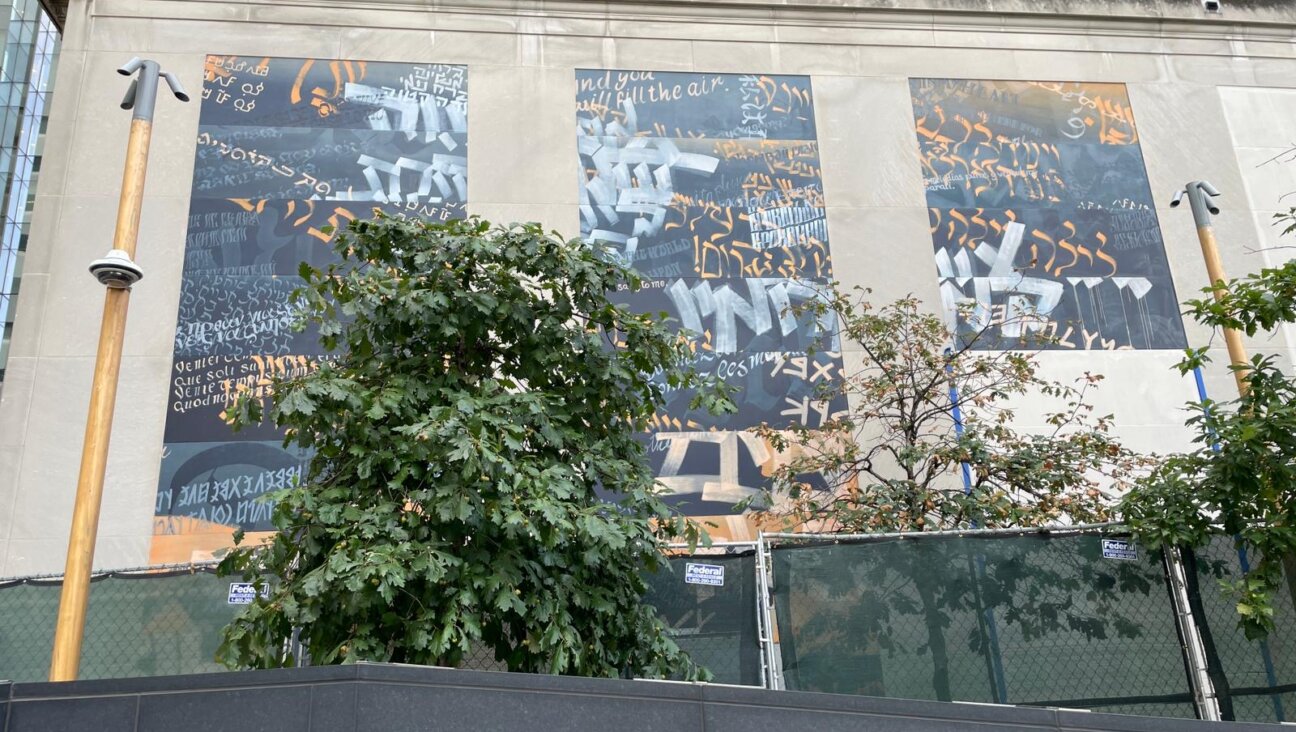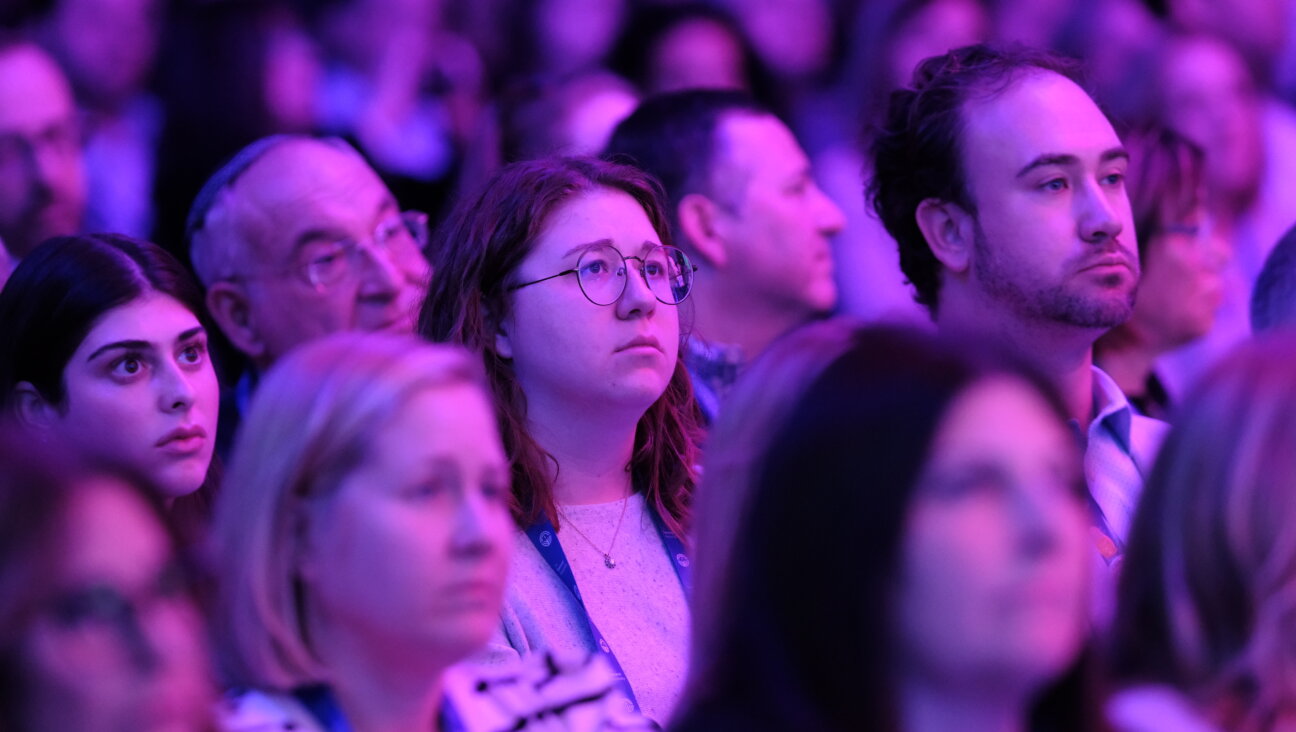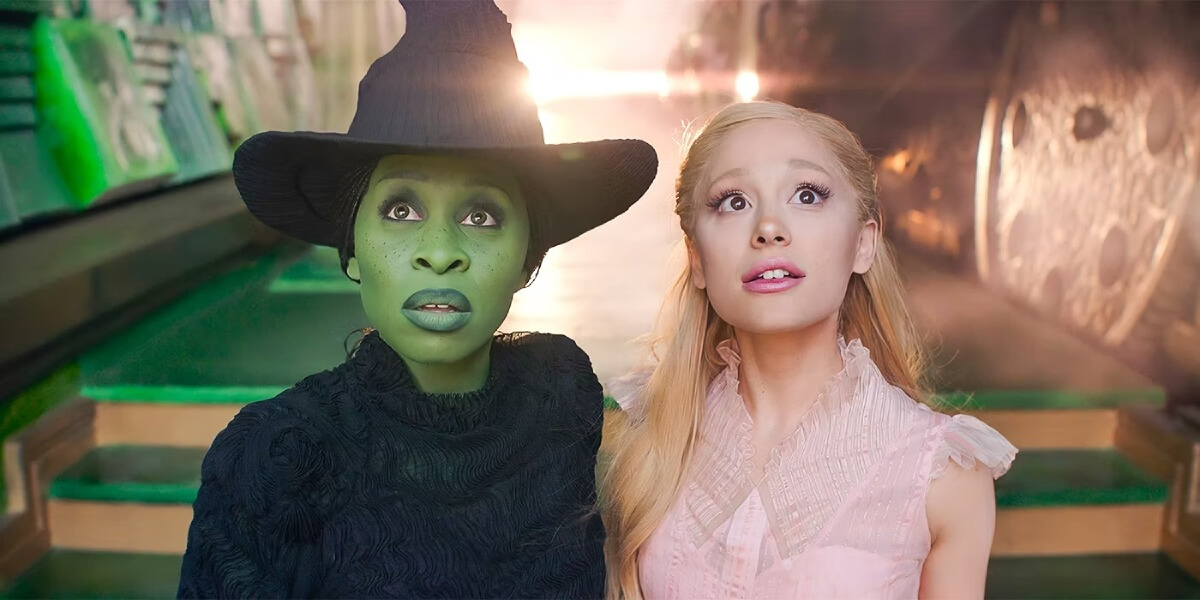We Went To The Museum Of The Bible — So You Don’t Have To

Image by Museum of the Bible
Entering the Museum of the Bible was a little like getting on a plane to Israel — it was a mess trying to get through security. There was a kind of honeycombed bomb-sniffing device, tall as a man, that a French correspondent said reminded her of something from “Star Trek.” A newspaper reporter from Alabama wasn’t allowed in the media entrance until he explained that newspaper reporters were in fact members of the media.
The Museum of the Bible is located in Washington D.C., the American city wherein one hears the most about “biblical values” but the sees them least enacted — if by “biblical values” we mean humility, charity and generosity of spirit. The ostensible point of the $400 million facility, the brainchild of Steve Green, CEO of Hobby Lobby, is to help visitors “experience the book that shapes history,” as the website puts it. This is actually a fascinating idea, but there are troubling questions about its execution.
Obviously the Bible in question is the Christian one, which is to be expected. But the scholarly concern is that the museum has an evangelical religio-political agenda — which is pretty reasonable since Hobby Lobby took its refusal to pay for certain kinds of birth control for its employees all the way to the Supreme Court, and won. Also there were serious provenance issues as Green amassed his collection, leading to a $3 million fine imposed by the U.S. Department of Justice.
In the latter case, the museum assures us that it’s cleaned up its act. The press materials stressed a “rigorous” vetting process. At the press conference, I buttonholed Dr. Lawrence Schiffman, a Professor of Hebrew Studies at NYU. He insisted that “the provenance issue isn’t fake news, but it’s old news.”
Schiffman admitted that he works for the museum as a paid advisor on Judaism. When I asked if he could be more specific about his job, he replied, “I walk around. I read things.” When questioned about the possibility of an evangelical agenda, he denied that there is one, speaking instead of the “respect and love” he receives as a Jewish colleague. “This is an amazing moment in Jewish-Christian relations,” he said.
The museum’s own position is that the museum is “nonsectarian.” During the press briefing, executive director Tony Zeiss said that the museum had hired a sofer to inscribe a Torah.
“We do not advocate for one specific faith tradition,” he said. “We advocate for the Bible.”
Maybe so. But the Green family and others involved with the museum at the highest levels, Zeiss included, are evangelical Christians. Green himself has been quoted as saying he believes that the King James Bible is inerrant and that the United States was founded on “Christian principles.” In this light, the concerns of religion scholars seem warranted: that the Museum of the Bible will both reinforce the narrative of America as a “Christian country” and undermine the separation of church and state, at least in the eyes of its visitors.
I tried to view the museum with an open mind, but right from the get-go it was hard to avoid a certain tendentiousness even before setting eyes on the exhibits. The Museum of the Bible is two blocks from the National Mall and three blocks from the Capitol Building, so it’s going to be quite easy for visitors to conflate it with governmental institutions. Green himself, in the post-press conference media scrum, said that while the museum took a “journalistic” view of the Bible he wouldn’t mind if legislators came over to see the “biblical connections,” presumably between the text and American governance.

Special Appearance: Maimonides has a cameo at the Museum of the Bible. Image by Gordon Haber
What of the museum itself? Well, it looks great. Built in a former warehouse, its exterior is a straightforward brick building topped with curving glass-and-aluminum additions. The interior is all pale marble awash in natural light. That is probably the place’s greatest strength, as natural light is refreshing for the eyes during a long day of elisions and half-truths.
The fun starts with the Impact of the Bible on the second floor, which comprises three exhibits: “Bible in America,” “Bible in the World” and “Bible Now.”
Dominating “Bible in America” is a bizarre series of murals depicting ostensibly watershed moments in American history. We see Native Americans earnestly receiving Bible instruction and then earnestly slaughtering colonials; we see a disembodied, presumably divine hand with a quill pen poised above Article VI of the Constitution — which forbids religious tests — and then George Washington swearing the Oath of Office with one hand resolutely on a Bible.
To be fair, “Bible in America” complicates the narrative by displaying passages from scripture used to both rationalize and abolish slavery. As for the folks who were here first, one small bit of wall text reminds us that “the arrival of European adventurers and settlers proved catastrophic for Native Americans, whose populations were decimated by disease and conflict.” They even throw in a couple of women, with a small display dedicated to African-American poet Phillis Wheatley and a portrait of Harriet Beecher Stowe. They throw the Jews a bone as well, with the inclusion of a Torah scroll in the colonial-era mural; it feels a little churlish to point out that the colonies were not exactly welcoming to Jews, and most of us didn’t get here until two centuries later.
Nevertheless, “Bible in America” does indeed follow the evangelical narrative of American history, which begins with the Mayflower Compact, a document that acknowledged the necessity of civic government in Plymouth Colony. Because the Compact asserts that it is written “in the name of God,” and the Founding Fathers (supposedly) based the Constitution on the compact, many American Christians believe that America was thus founded on “biblical principles.” “Bible in America” includes a facsimile of the Liberty Bell, apparently the first object installed in the museum. It is difficult to see how this object relates in any way to the Bible unless one is already convinced that the American experiment is divinely inspired.
It was harder to suss out a coherent narrative in “Bible in the World,” other than something to the effect of the Bible being really great and behind everything that is good about world. This exhibit features sections delineated by topics like “Science,” “Compassion,” “Health,” “Art,” “Literature,” and “Sandwiches.” Actually, the last one is my own invention, added to highlight that if you try hard enough you can connect anything to the Bible.
I had only finished the second floor, and I was already exhausted.
The next flight up is dedicated to “Stories of the Bible.” The Hebrew Bible is presented in a jaw-dropping multimedia “experience” with a voiceover provided by Ezra the Scribe, who sounds a lot like an Israeli tour guide. This “journey into the heart of ancient texts” actually doesn’t contain much text at all: instead we get animation, sound and lighting effects, and the inevitable smoke machine. I suppose it will be thrilling to many visitors — certainly the Mennonite couple touring the exhibit with me seemed exhilarated. All I can say about this is to repeat the old saying, “For the people who like this sort of thing, this is the sort of thing that they will like.”

It Was 2000 Years Ago (Or So): The world of Jesus at the Museum of the Bible. Image by Museum of the Bible
After this multimedia bludgeoning, I couldn’t bring myself to face “The New Testament.” Instead I explored “The World of Jesus of Nazareth,” a recreation of the village of a first-century Palestinian village (not that the Roman designation for the region was anywhere in evidence, considering its current connection with Arabs). This exhibit is replete with reproductions of stone walls, gnarled olive trees and clay pots; there was also an olive press, and (fair enough) a mikveh and a first-century synagogue. Hidden speakers emitted the sounds of bleating lambs.
All this, to my eyes and ears, was astonishingly kitschy. I can only thank God that when I visited, the re-enactors weren’t yet on site. But again, this is merely the opinion of a cranky Jewish critic: when I asked one woman with a kind of hemispherical haircut what she thought of the village, she said, “It’s awesome,” with unfeigned enthusiasm and tear-rimmed eyes.
Other visitors seemed to have a more detached approach. “I’da just hired Disney people. That’s what Rick Warren did,” said an older man with a helmet of gray TV-preacher hair and a southern accent.
By this point I was hungry and desperate for coffee. The Milk and Honey café was closed, but I did manage to beg some food from the restaurant, Manna (not kosher, by the way), which features biblical treats like mac and cheese and frites with lemon aioli. To be fair, the staff was extraordinarily nice, and the food was delicious — I had falafel, short ribs in tomato sauce and rice with bulgur wheat.
Thus fortified, I went to the fourth floor to see the “History of the Bible.” This giant exhibit features 600 artifacts in eleven galleries, tracing the development from ancient Near Eastern texts, through Hebrew texts that made their way into Greek. It was quite interesting to see the inclusion of the Septuagint in the development of the Bible, as well as a display explaining Jewish texts like the Talmud and Tosefta near a copy of Rashi’s commentary. I could have done without the video of an actor playing Maimonides, however, replete with headwrappings, robes, fake beard, and benevolent smile. Having studied some of the great man’s writings, he doesn’t strike me as the kind of rabbi who smiled a lot.
There are nods to diverse Christian traditions with the inclusion of Eastern Orthodox and Assyrian Bibles. And there is the inevitable reproduction of Gutenberg’s press. But the greater emphasis in “History of the Bible” is the development of the English-language translations — we also get videos of Wyclif and Tyndale, I think wearing the same fake beard as the Rambam — that supposedly culminated in the King James Bible.
Thus while the museum insists that it is non-sectarian, it demonstrates an undeniable emphasis on the evangelical conception of the Bible and its role in Western culture and American life. Which would be absolutely fine, as Green can do whatever he likes with his cash, so long as he’s aboveboard about provenance.
The big problem here, I think, is location. In the press conference, Green said that the market research suggested the museum would be most successful in D.C., New York or Los Angeles. By placing it in D.C., Green is of course making overt connections between his brand of Christianity and the American government. This is troubling, especially since so little of the Museum of the Bible engages with Christianity itself than it does with the evangelical tenets of belief and nationalism.
What’s telling is that, unless I missed it, I saw zero mention of Islam or Arabic. It seems ridiculous to discuss the History of the Bible without exploring, even briefly, how such an important world religion was influenced by Jewish and Christian texts; it seems egregious that while American Christians rightfully decry the oppression of Christians in the Muslim world, the Museum of the Bible is — again, unless I missed it — completely free of Arabic.
In all fairness, their inclusion of Jewish influence, Native American genocide, and American slavery is a giant step forward for evangelical Christians, who historically have preferred to gloss over these facts. Nevertheless, they are still subsumed by the same old Christian triumphalism. The Museum of the Bible acknowledges some difficult questions, but it doesn’t really grapple with them.
But that’s not the point. Religion in America is about feeling, not about historicity or (God forbid) right action. In the Museum of the Bible, there’s an exhibit that asks, “How does The Bible make you feel?” A touchpad allows you to write a one-word response that is then displayed on a screen alongside other responses. I wrote, “confused.” The person after me wrote, “stronger.”

In The Beginning Was The Word: The Museum of the Bible offers various interactive features. Image by Gordon Haber
For me the ultimate message of the place is more troubling. Schiffman sees it as a great moment in Jewish-Christian relations. He’s kidding himself. Because, despite the sincere attempts at inclusion, the museum functions as a message for non-Christians, and it’s our best interests to be aware of it. The Museum of the Bible is telling us unbaptized that, whether it’s American or Israel or “Nazareth,” it’s their world, and we just live in it.

